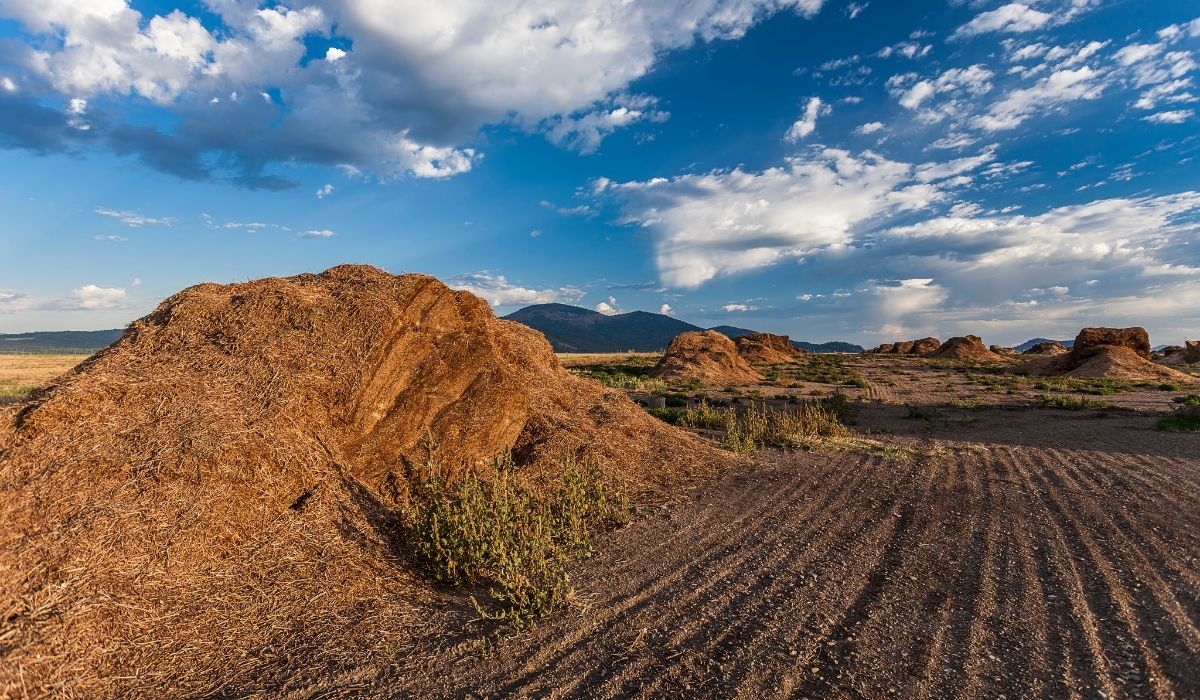Code of Practice for Agricultural Environmental Management – Nutrient Application & Management
The Code of Practice for Agricultural Environmental Management ensures that nutrient application matches crop needs and aims to prevent nutrients and pathogens from entering water bodies. Farmers must test their soil, follow a nutrient management plan, or conduct a risk assessment during the wet season before application.
As a general rule, do not apply nutrient sources to standing water or saturated soil, on frozen ground, or on a field where there is at least 5 cm of ice or snow over 50% or more. Avoid allowing nutrient sources to enter a watercourse, someone else’s property or leach into the water table.
Always keep records of the type of nutrients you apply to your field and how much and where.
If your land base is 2 hectares or more, and you use nutrients, you must take soil tests for each field for post-harvest nitrate and phosphorus. Tests must be completed every three years at a minimum, and a nitrate test should be conducted on an annual basis with high nitrate results.
Having a nutrient management plan can help you to be prepared and follow a guided manner of applying nutrients to your land. To find out more, please visit https://www2.gov.bc.ca/gov/content/environment/waste-management/industrial-waste/agriculture/regulation-requirements/nmp-under-aemcop and https://www2.gov.bc.ca/gov/content/industry/agriculture-seafood/agricultural-land-and-environment/soil-nutrients/nutrient-management/nutrient-management-plans.
Pain Points
Nutrient management is a necessary component of environmental stewardship. It offers economic and ecological benefits that can help reduce input costs for production and minimize nutrient loss risks to surface and groundwater. As fuel and fertilizer prices rise, it becomes more critical to have an effective nutrient management plan as the impacts on the overall sustainability of crop and livestock operations are too great to ignore.
To understand how various crop nutrients interact in the landscape, we must pay proper attention to nutrient management. Knowing which soils have the potential to be at higher risk of nutrient loss can help producers manage nutrients more efficiently while protecting the environment.
There are some essential elements to nutrient management to be aware of:
- Soil Testing – To produce an accurate reading of the soil nutrients required for crop growth, a soil sampling strategy should be followed. There will be a recommended amount of supplemental nutrients to add as fertilizer. You can refer to this guide for a basic, yet detailed rundown of soil testing for your farm.
- Manure Testing – You can determine an application rate for crop nutrient requirements by estimating the amount and availability of manure nutrients. Check out this report about interpreting manure analyses accurately.
- Maintaining a realistic idea of crop yield targets – You can use your field and farm records to determine target yields for reasonable and attainable results. If your farm records aren’t available, then you can use crop insurance data. Most farmers are aware that higher crop yields can result from increased nutrient uptake from added fertilizer. However, it is still important to consider that other factors like limitations from the weather, pests, practices etc. can impact yield potential.
- Keeping Proper Records – by documenting your nutrient management journey, you can maximize the economic benefits while also reducing environmental risks. All aspects of information should be recorded, including details on the fields receiving nutrients, fertilizers, soils, crops being grown and equipment being used, not to mention any weather conditions that may affect application. Check out this article about ways to keep better farming records.
Here are some challenges to nutrient management that many farmers are faced with:
- When is the right time to apply? Application in the fall is preferred as fertilizer costs are lower, and there seems to be more time, drier field conditions etc. However, if your soil is more susceptible to leaching and runoff, fall application may not be the best option. To learn more about the best times to apply nutrients, see this helpful article.
- When is too much too much? Over-application of manure happens when you apply too much product on too little acres. Two factors that influence farmers’ reliance on using manure fertilizer to meet crops’ nutritional needs are a shortage of land and prohibitive transportation.
- How do you establish thresholds? It is challenging to establish impacts and limitations within an environmental and economical standard, so it is best to do some research prior to developing a nutrient management plan.
The Government of Canada provides a clear and detailed document around nutrient management planning. For more direction, you should check it out here.
How Agrilyze Can Help
- Task Management allows for the capture of records that are stored, reportable and auditable
- Track the historical data to run comparative analysis on what happened with crops in previous years based on nutrient applications, weather, crop types, irrigation
- Better track soil nutrients to apply the correct amounts to provide maximum economic benefit
- Input standard soil tests into Agrilyze and then compare year over year
- Visually see soil test results on a map on your farm
- Easily access legislation, standards, guidelines, best practices through links to the source data in Agrilyze
- Understand where streams, drainage, aquifers are and how they relate to the fields
- Track and improve usage patterns on the farm by mapping them
If you have feedback about this post or would like us to explore a particular topic, please let us know by sending an email to [email protected].
Read the Code of Practice for Agricultural Environmental Management – Introduction (with infographic) – https://agrilyze.ca/code-of-practice-for-agricultural-environmental-management-introduction/



